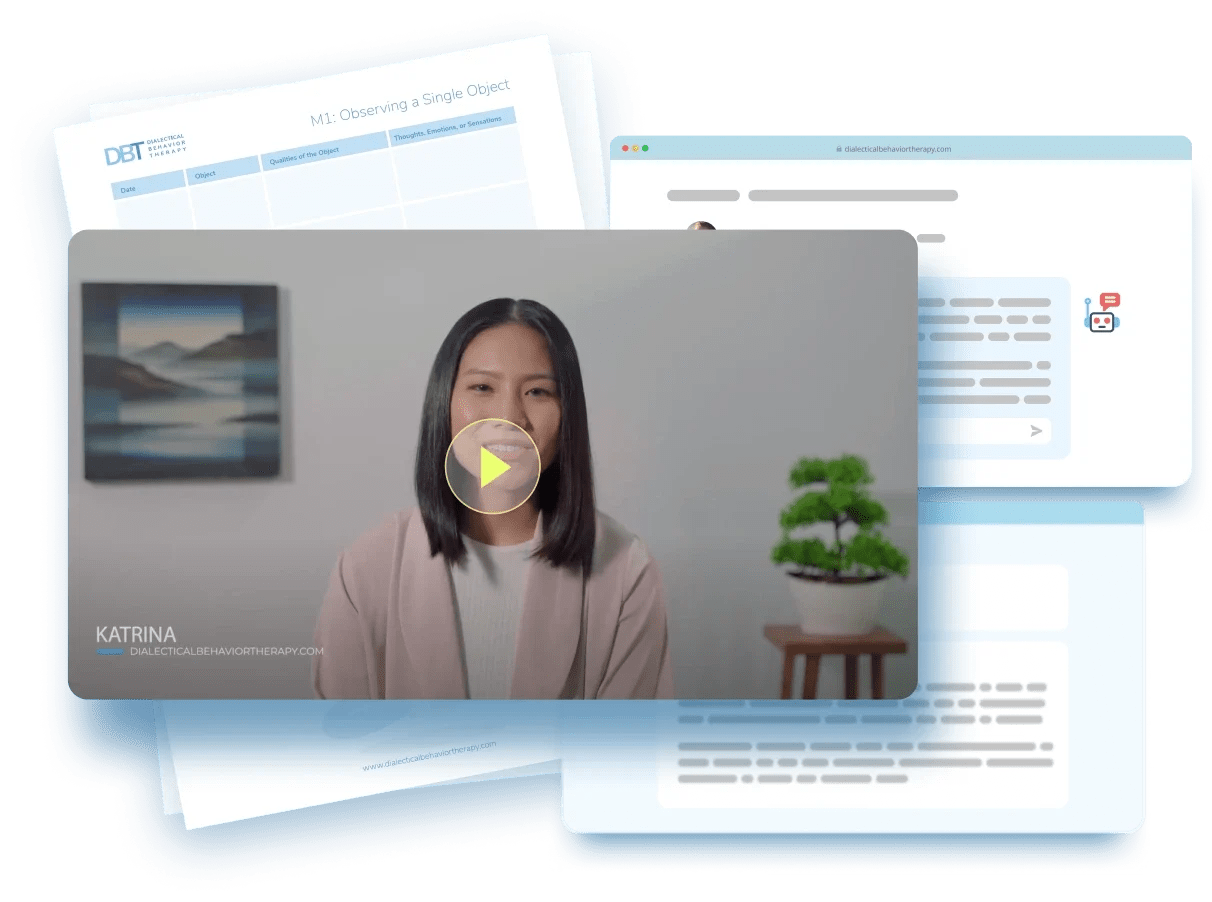What is Emotion Regulation?
Consider this scenario: You start your day with a spring in your step, feeling energized and optimistic. Your morning coffee tastes exceptionally good, and everything seems to be going your way. But as the day unfolds, you encounter a series of frustrating challenges – a missed deadline, a critical email from a client, or an unexpected personal setback.
Life is unpredictable, and such emotional upheavals are inevitable. These regular emotional storms often trigger intense feelings like excessive worry, disappointment, or frustration.
This is where the importance of Emotion Regulation comes in.
Emotion regulation is the process of managing and responding to your emotional storms in healthy and constructive ways. It’s about recognizing and understanding your emotions, and choosing how to express and act on them.
Developing strong emotion regulation skills is crucial for navigating life’s ups and downs effectively – and aiming for the results you want to achieve.
Emotion Regulation vs. Distress Tolerance
Does the definition sound similar to Distress Tolerance? Let’s explore the difference further.
Both skills are crucial, and they help you handle your emotions in different ways. Emotion Regulation is more about managing your emotions on a day-to-day basis, while Distress Tolerance is about getting through those high-stress moments without falling apart. Here is an analogy:
In Emotion Regulation, you are a chef. But instead of food, you are cooking with your emotions. Like ingredients, you identify your emotions, know where they came from, peel them, prep them. You get to know what triggers your emotions and you learn to identify them. You also follow a recipe to cook your emotions, maybe turn down the heat at intervals and add some seasonings of various activities to find the balance. As a chef, you are also in charge of preventing kitchen accidents by employing habits like sleeping well, eating nutritious food, and avoiding your emotional triggers.
In Distress Tolerance, you are the captain of a ship. Your emotional crises are the storm and your aim is to get through them. Like the tools and parts of the ship, Distress Tolerance also equips you to brave through the storm without the ship tipping over. It also helps you employ techniques to not panic or become too emotional and make things worse. In essence, they both let you deal with emotions but in different ways.
List of Emotion Regulation Skills and Techniques
We have a list of 10 Emotion Regulation skills that have lessons, videos and exercises on this page for you to practice and master.
- exercise E1: Recognizing Your Emotions Delve into primary and secondary emotions, fostering a deeper understanding of emotional responses.
- exercise E2: Being Effective Focused on establishing clear goals and creating practical steps to achieve them, enhancing personal effectiveness.
- exercise E3: Emotions & Physical Vulnerability Explore how physical habits like sleep, diet, and exercise impact emotional resilience and overall mental health.
- exercise E4: Emotions & Cognitive Vulnerability Address how certain thinking patterns can distort reality, and affect emotions, and learn strategies to adjust these patterns.
- exercise E5: Self Validation Emphasize the importance of acknowledging and accepting your own emotions as valid and real.
- exercise E6: Myths About Emotions Debunk common misconceptions about emotions, which can lead to healthier emotional processing.
- exercise E7: Emotion Exposure Techniques to become more comfortable with experiencing negative emotions, reducing fear and avoidance.
- exercise E8: Balancing Emotional Urges Strategies to manage and regulate urges that may arise from intense emotions but are counterproductive.
- exercise E9: Problem Solving Prepare for and effectively handle emotionally challenging situations through practical problem-solving skills.
- exercise E10: Mastery & Coping Ahead Build skills for mastering difficult tasks and anticipating emotional challenges, improving coping strategies in advance.
How Do These Emotion Regulation Skills Help?
These skills are especially beneficial if you are experiencing overwhelming emotions, as they provide strategies for recognizing and labeling emotions. Once you are able to recognize and label your emotions, you can reduce your vulnerability to emotional swings, and decrease your emotional suffering.
Additionally, they aid in increasing mindfulness towards current emotions and offer techniques to change unwanted emotions. By learning these skills, you can improve your emotional resilience, leading to better mental health and relationships.
How Do Printable Emotion Regulation Worksheets Help?
These printable Emotion Regulation worksheets help by:
- Providing Structure: Worksheets follow a certain order and structure to your Distress Tolerance exercises.
- Giving Tangible Lessons: Worksheets offer a tangible way for you to engage with the concepts taught in therapy, facilitating self-reflection and understanding of your emotional patterns.
- Ensuring Consistent, Gradual Improvement: By regularly completing these worksheets, you can gradually improve your ability to handle emotional challenges more effectively.

Why Is Emotion Regulation Important?
A key immediate advantage of emotion regulation is you have the ability to quickly feel better by effectively managing your emotions. This skill allows for more prompt and balanced emotional responses, leading to enhanced emotional well-being.
The long-term benefit includes better well-being, better performance at work, school and more meaningful relationships!
Consequences of Poor Emotion Regulation
Some of the consequences of poor emotional regulation are:
- Problems in Relationships: Poor emotion regulation skills often lead to overreactions or inappropriate responses in social interactions, causing strain in relationships with family, friends, and at work.
- Poor Physical and Mental Health: Ineffective management of emotions can contribute to stress, anxiety, and depression, adversely affecting overall physical health, including increased risk of heart disease and weakened immune response.
- Impulsive Behavior: Difficulty in controlling emotions often results in impulsive decisions and actions, leading to risky behavior and potential negative consequences in various aspects of life.
- Reduced Quality of Life: Chronic struggles with emotion regulation can diminish life satisfaction, leading to a pervasive sense of unhappiness and a decreased ability to enjoy daily activities and achievements.
Subscribe.
Get the DBT course. Free!
Get your full access to our 26-week DBT course.
Lessons emailed to you twice a week.

Frequently Asked Questions
We regulate our emotions in two overarching ways:
Suppression, which is all about pushing our negative emotions aside, trying not to feel them. This approach can be temporarily effective but may lead to increased stress and emotional build-up over time.
And reappraisal, on the other hand, involves changing how we think about a situation to alter our emotional response. This method is healthier and more effective in the long term, as it addresses the root cause of the emotions and helps you deal with them.
The DBT Emotion Regulation videos and worksheets we have in this page are made for adults. Teenagers are also old enough to follow the instructions in each exercise.
- Emotion Cards for Kids: Create a set of cards with different emotions depicted through facial expressions, colors, or scenarios. Kids can use these cards to express how they’re feeling at any given moment. This helps them identify and communicate their emotions effectively.
- Art Therapy: Set up a creative space where kids can draw, paint, or craft to express their emotions. This could be a “feelings corner” where they can go whenever they feel overwhelmed. The act of creating art can be both therapeutic and a way to tangibly express complex feelings.
- Sports and Exercise: Engage children in physical activities or sports that allow them to channel their energy and emotions. Activities like soccer, basketball, or even simple games like tag can help in releasing pent-up emotions. This also teaches them about teamwork and healthy competition.
- Mindful Breathing: Teach children simple breathing exercises that they can use when they feel anxious or upset. For example, the “balloon breathing” technique where they imagine inflating a balloon as they breathe in and deflating it as they breathe out. This can be a quick and effective way to calm down.
- Role-Playing Games: Create scenarios where children can role-play different emotions and reactions. This helps them understand various feelings and empathize with others. It also gives them a safe space to explore different responses to emotions.
References
- Psychology Today. “Emotion Regulation”
- Alvarado Parkway Institute. “Emotional Regulation: What Is It And Why Is It Important?”
- Your Therapy Resource. “10 Emotional Regulation Activities For Kids”
- Kelley, N. J., Glazer, J. E., Pornpattananangkul, N., & Nusslock, R. (2019). Reappraisal and suppression emotion-regulation tendencies differentially predict reward-responsivity and psychological well-being. Biological psychology, 140, 35-47.
- Peixoto, L. S. A., & Gondim, S. M. G. (2020). Mindfulness and emotional regulation: a systematic literature review. SMAD. Revista eletrônica saúde mental álcool e drogas, 16(3), 88-104.
- Wirtz, P. H., von Känel, R., Mohiyeddini, C., Emini, L., Ruedisueli, K., Groessbauer, S., & Ehlert, U. (2006). Low social support and poor emotional regulation are associated with increased stress hormone reactivity to mental stress in systemic hypertension. The Journal of Clinical Endocrinology & Metabolism, 91(10), 3857-3865.




I have just found this website while for looking for resources for my clients. It’s amazing! I need to start by doing it myself so I can share it with others.
This looks like a DBT thing I did in the past. Was amazing. Time to take control of my mental health again, because I’m getting really off kilter again
thanks a lot for these tips. I am a clinical psychology resident and have a lot of interest in DBT.
thanks so much for this free dbt stuff
thomas
The resources on this page are fantastic. Thank you for teasing out the different facets of DBT and making it clear to understand. DBT can be an incredibly useful treatment option for several psychological disorders and it is great that clients can access FREE resources like these on their own.
Love this page, thank you for all these wonderful tips. So helpful.
Es hat mir sehr geholfen danke